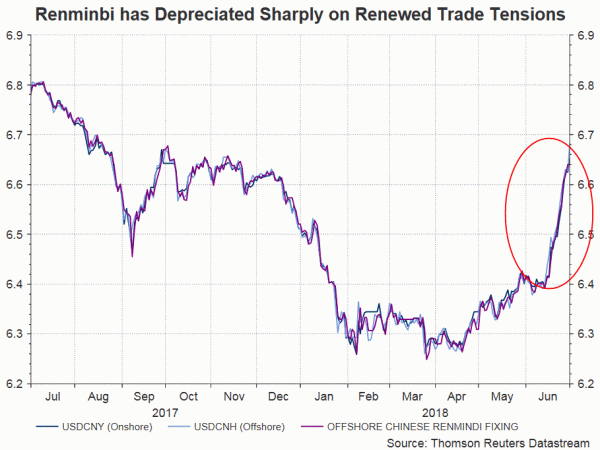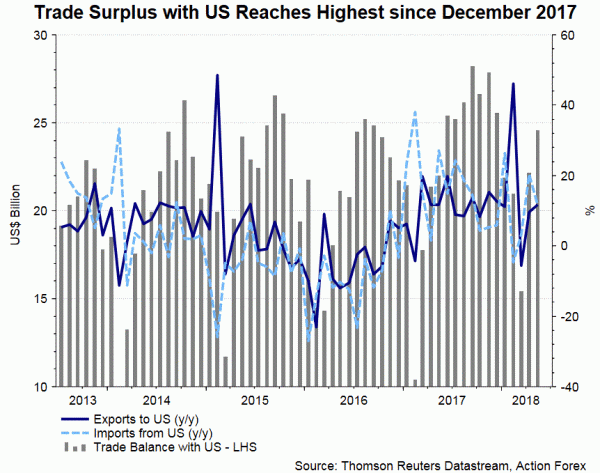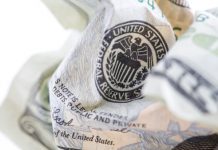Weakness in renminbi has accelerated recently, driven by Donald Trump’s new list of tariff against China announced in mid-June, PBOC’s RRR cut and the jump in risk aversion over the Chinese market. USDCNY’s rally of more than +4% over the past two weeks has raised speculations about China’s retaliation against the US-induced trade tensions. It has also recalled the massive capital outflow in China after the authority’s currency reform in August 2015. While we agree that China might have intentionally allowed its currency to depreciate of late, excessive currency weakness would exacerbate China’s problem, especially during the current time of growth slowdown, elevated debt levels and stock market crash. The Chinese government is cautiously monitoring the situation so that renminbi depreciation would not trigger the capital flight like the one happened three years ago.
Renewed Concerns over US-China Trade War
Concerns over a trade war were calmed temporarily as US and Chinese official held talks in May, culminating into a joint statement suggesting that both sides agreed to “substantially reduce US trade deficit with China”, and to put tariffs on hold. However, Trump, shortly following the US-North Korea summit in Singapore, announced on June 15 the plan to impose 25% additional tariffs on Chinese goods worth of US$ 50B. The first round of tariff, effective July 6 and involving US$ 34B worth of Chinese goods, covers nuclear reactors, electrical machinery, railway equipment, vehicles, aircraft and parts, ships, medical devices, and rubber, while the remaining US$ 16B of goods covers semiconductors, chemicals, glass, iron or steel, aluminum, machinery and plastics, etc. China responded by reciprocating tariff on US goods worth of US$ 50B. First round of tariff, also effective July 6 and involving US$ 34B worth of Chinese goods, covers soybeans, seafood, pork, chicken, and autos, etc, while the second round covers coal, crude oil, gas, medical devices and chemicals, worth US$ 16B in total.
China Refrains from Allowing Excessive Renminbi Selloff
Renewed trade tensions have caused renminbi to weaken sharply. The speed of the selloff has even raise suspicions that the Chinese government has manipulated currency as a policy tool. Indeed, the aggressive USDCNY fixing appears to have lent credit to such speculations. A weaker currency could help a country’s exporters. Moreover, it could help export-oriented economy such as China. In the 90s, the US Treasury labeled China a currency manipulator amidst the latter’s aggressive depreciation of renminbi to boost exports. Back then, China had met the US criteria of currency manipulation of 1) having a significant trade surplus with the US (over US$ 20B); 2) having a material current account surplus of over 3% of GDP and 3) conducting persistent and one-sided purchases of foreign currency over a 12-month period. However, over the past few years, although China is still having significant trade surplus with the US, its current account surplus as a percentage of GDP has shrunk remarkably. Moreover, it has refrained from repeated purchase of foreign currencies so as to weaken renminbi. In order to defend renminbi and prevent capital outflow, PBOC had sold foreign currencies aggressively in 2015 and 2016. This suggests that, while China enjoys the benefit of weak currency on its exports, it is cautious over excessive selloff of renminbi as this might roil market confidence and trigger massive capital outflow.
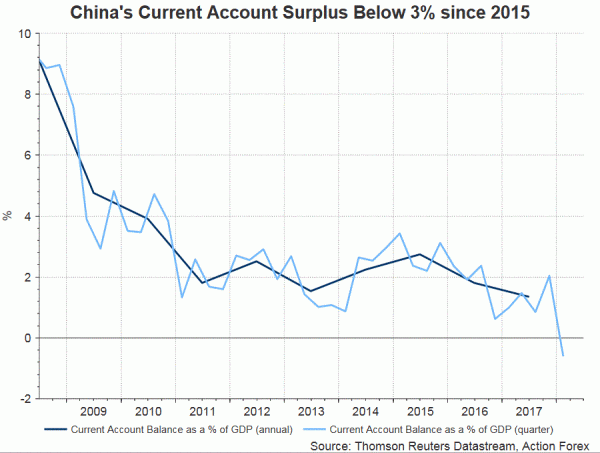
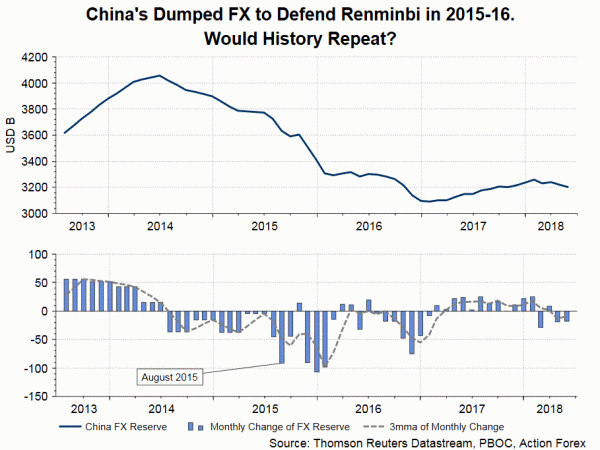
But Comfortably Rides on Recent USD Strength
We believe the recent renminbi weakness is helped by the broadly based USD strength, thanks to a more hawkish Fed and the resilient US dataflow. US dollar index (DXY) on June 21 rallied to the then one-year high 95.53 which was briefly breached on June 28. We believe much of USD’s strength during the period was against the euro. Indeed, EURUSD recorded an intraday selloff of -1.9% on June 14 and retested a one-year low on June 20. That said, the greenback also strengthened against major currencies due to monetary policy divergence (i.e. Fed funds rate to rise further while other major central banks are keeping their policy rates at, or near, record lows. The broadly based strength in US dollar has provided an environment for Chinese officials to let its currency depreciate more “reasonably”.




